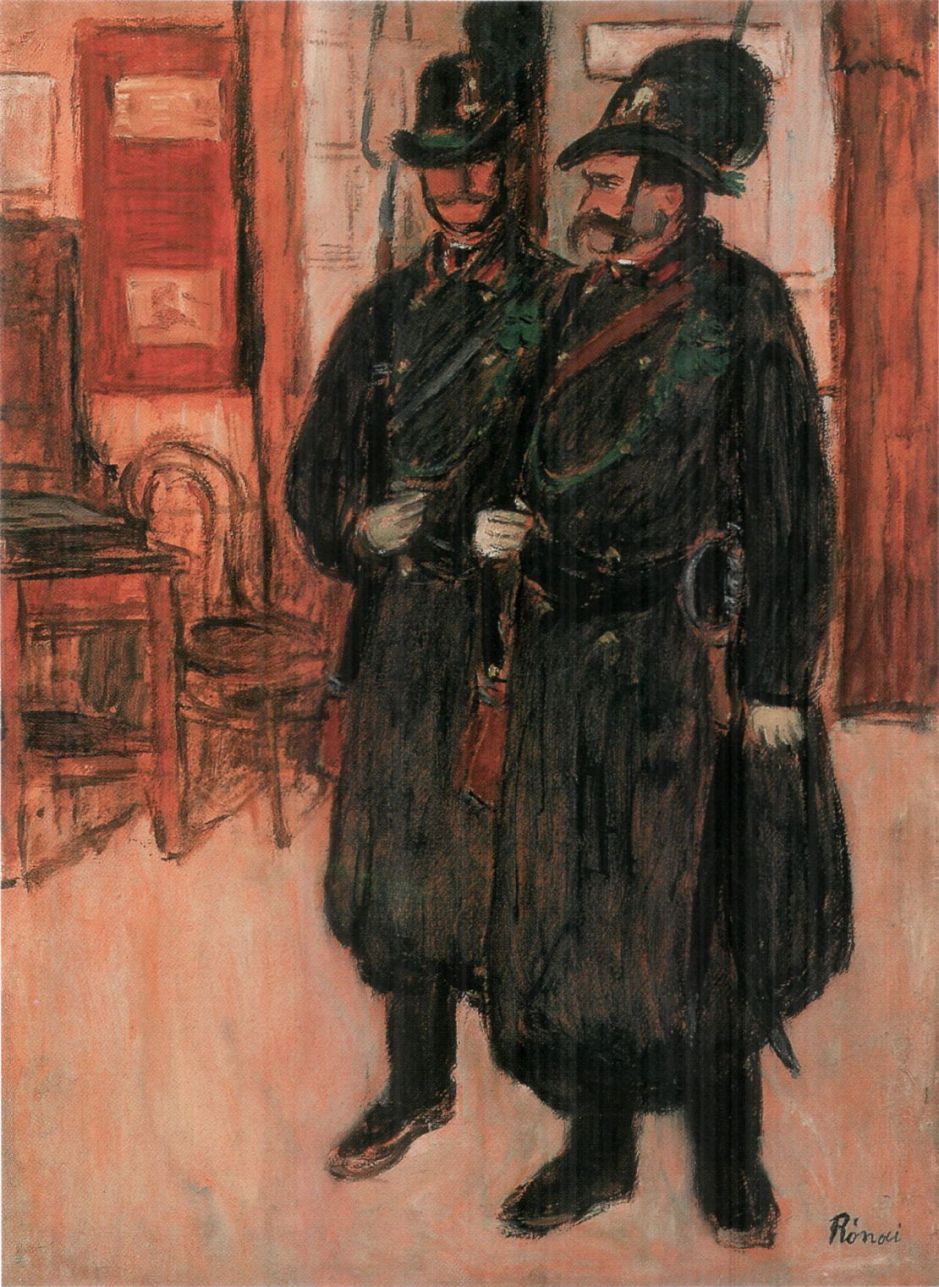Before the end of the nineteenth century, the Hungarian Nabi József Rippl-Rónai (1861–1927) returned to his native country, settling in his home town of Kaposvár by 1902.

Nice Landscape in the Pyrenees from 1899 may have been one of his last works before leaving France, and shows the appearance of rich if not brash colour.

In 1900, he had his first major exhibition in Budapest, where the reception was lukewarm at best. That same year, he painted this unusual and chroma-rich nocturne of The Tőketerebes Castle at Night in pastels. This Baroque building dates from 1786, and is in what is now known as Trebišov in Slovakia.

Rippl-Rónai appears to have returned to France on several occasions, and in about 1901 painted this pair of Gendarmes, most probably in Paris.

In 1903 or 1904, Rippl-Rónai visited the Adriatic Port of Fiume and painted this view in pastel. This is now Rijeka, the principal seaport and third largest city in Croatia.

In the middle of that first decade of the twentieth century, Rippl-Rónai’s facture underwent major change to what has been called his “corn” style (in Hungarian, kukoricásnak). This can be seen in the unusual patch structure of the paint on the walls and some furniture of his domestic view of Uncle Piacsek with Dolls from 1905. The uncle sits smoking his very long tobacco pipe, as two young girls in matching striped dresses play with their dolls around him.
In 1906, he exhibited over 300 works at another solo exhibition, which seems to have been more successful.

His already rich chroma increased further, and the corn style now includes clothing in his double-portrait of My Father and Piacsek, with Red Wine from 1907. Although it is tempting to see this style as related to Divisionism, it is quite distinct in the blobs or patches of paint merging with one another without free space between them, and being used with single rather than multi-colour patches.

In Rippl-Rónai’s 1909 painting of a Sour Cherry Tree in Blossom, the corn appears to have popped into an exuberant spray of white flowers.

That same year, he grew more confident with his corn style, as seen in the dazzling colours and tiled facture of Interior. Combined, these can make the painting shimmer.

Rippl-Rónai’s Park with Nudes from 1910 has more subdued colour, but his corn style is quite overt, with frequent glimpses of underpainting where the patches don’t exactly adjoin. This style also causes the outlines of the figures to appear rough and irregular in an unusual manner.

By the second decade of the new century, Rippl-Rónai was being commissioned to paint more decorative works, such as a series including this Panel-Picture for the Schiffer Villa, painted in 1911.

He also painted some classical landscapes, including Three Tall Poplars and two Stacks from 1912, which is in a long tradition going back to the early plein air landscapes of Valenciennes.
When the First World War broke out in 1914, Rippl-Rónai was visiting France. He was immediately interned as an alien, and doesn’t appear to have returned to Hungary until the following year.

As he grew older, Rippl-Rónai spent more time at his villa in his home town of Kaposvár, and painted mainly portraits, including this of Elza Bányai in a Black Dress from 1919. He died there in late 1927.
Like most of the Nabis, Rippl-Rónai’s mature painting was very different from that of his early career when the Nabis were together. In the twentieth century, he was a founder member of the Hungarian Impressionist and Naturalist Circle (MIÉNK), and is today considered by many to have initiated modern painting in Hungary. His later ‘corn style’ paintings are highly distinctive, and I don’t recall seeing any artist of the time using this style. He is also thought to have been highly prolific, with more than ten thousand works to his name, although most have now vanished into private collections.

